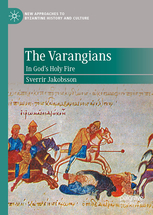In Finland, they traditionally use the Christmas goat to scare children but in Iceland we take the fight to the goat. Ever since 2009, it was been a tradition for vandals (the modern kind) to burn down the Gävle goat in front of the IKEA store in greater Reykjavik. Sometimes the culprits have been apprehended, but occasionally the weather gods have got the goat before the vandals did. Twice it has blown down by the wind, whereas once it spontaneously combusted due to the electric lights.
In fact, the tradition goes back to the town of Gävle, Sweden, where a Christmas goat made of straw has been erected ever since 1966 and been burnt down most years. 37 arson attacks have taken place in the years since. In 2001, a man from Cleveland did the damage, assuming he was taking part in an old and legal tradition. By now, there is a three month prison sentence for goat burning in Gävle.
But this is a year without many traditions, and due to Covid IKEA Iceland only reopened last Thursday. And speaking of Thor, torturing goats seems to be something of a Norse tradition. The God of Thunder, whose carriage was pulled by rams, would kill and eat them, only for them to come back the next day to be eaten again at the earliest convenience.
The goat is actually an old fertility symbol, and the Hall of the Gods has its own goat, called Heiðrún. This one conveniently milks mead rather than the more traditional goatmilk and there is always enough for everyone. Appropriately, there is a liquor store named Heiðrún in Reykjavík.
So if we see goats as giving, we have other ways to terrify children. One of these is the Christmas Cat, who is said to eat children who do not wear new clothes for Christmas. Who says it’s a consumerist holiday?

